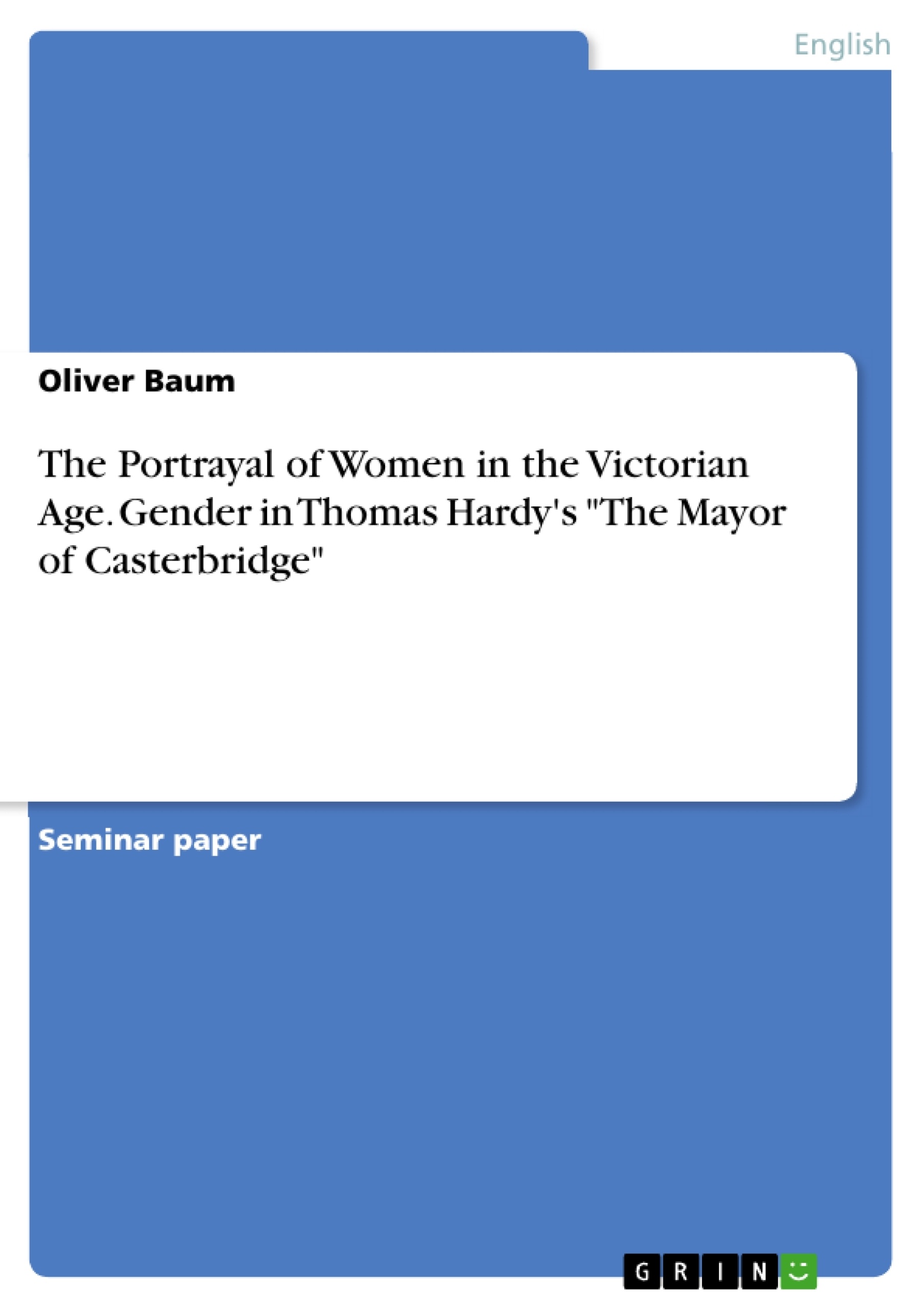This term paper focuses on the topic of gender and the investigation of Hardy’s portrayal of women as it emerges from the novel. In order to prove my thesis, I will reflect in how far Hardy follows major trends of Victorian fiction in The Mayor of Casterbridge. Next, I will depict the Victorian ideal of women with regard to fiction and society. Finally, I will prove my claim that Hardy’s ambivalent view of women, which embraces both conventional and modern ideals, is valid for The Mayor of Casterbridge, because it portrays women both as inferior and superior. Accordingly, I will show that Hardy’s heroines deviate from the prevalent Victorian ideal of women. Therefore, I will analyse crucial aspects like Hardy’s authorial point of view as well as Henchard’s relationship to Susan, Lucetta, and Elizabeth-Jane, in the novel.
My thesis matters because “[…] the appeal of Hardy as a novelist […] has long been vital, increasingly so in recent years […]”. Besides, “[t]he tension […] of Hardy’s representation of women […] makes his work one of the richest and most complex sources of feminist commentary in the realist novel”. Recent criticism of Hardy focused on Marxist and feminist theories by reassessing Hardy’s novels as revolutionary. This issue remains important because women have been oppressed for centuries, while Hardy’s fiction contributed to the women’s struggle for emancipation.
Table of Contents
Philipps-Universität Marburg
1. Abstract
2. Gender in Thomas Hardy’s The Mayor of Casterbridge
2.1. The Mayor of Casterbridge within the Historical Context of the Victorian Age
2.2. The Victorian Ideal of Women in Society and Fiction
2.3. Hardy’s Portrayal of Women in The Mayor of Casterbridge
3. Conclusion
4. Bibliography



